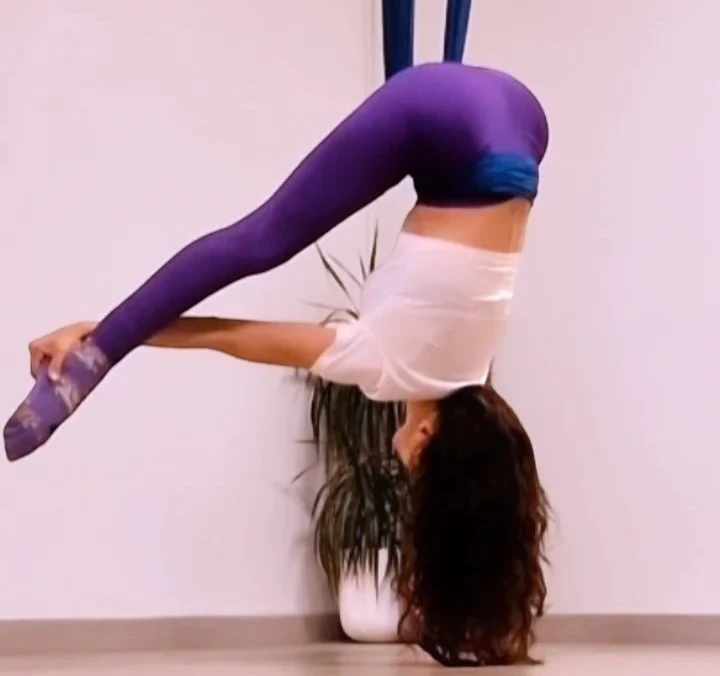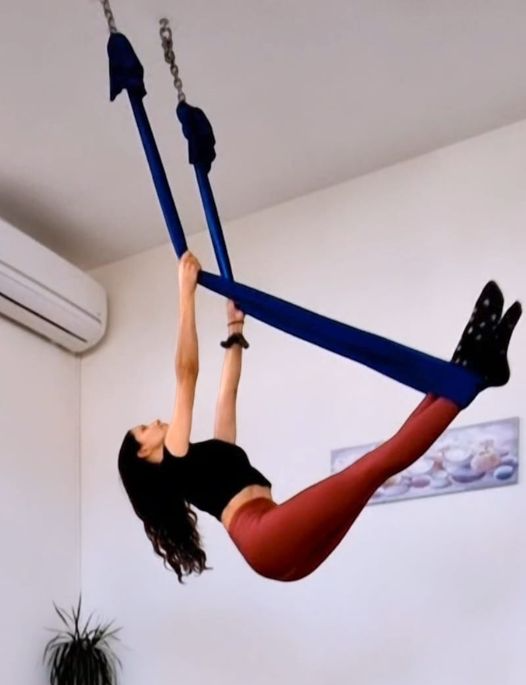Aerial yoga, also known as anti-gravity yoga, has become a popular and innovative form of exercise that combines traditional yoga poses with the use of a suspended hammock or silk. This practice has a rich and fascinating history, blending elements from various disciplines to create a unique and holistic approach to fitness and well-being.
Early Influences
The origins of aerial yoga can be traced back to the early 20th century when the concept of suspension and inversion techniques began to gain traction. Influences from various disciplines such as gymnastics, aerial arts, and traditional yoga converged to pave the way for what would eventually become aerial yoga.
- Gymnastics and Circus Arts: The use of aerial apparatuses, such as trapezes and ropes, has been a staple in circus arts and gymnastics for many years. Performers and athletes utilized these tools to develop strength, flexibility, and acrobatic skills. These practices laid the groundwork for incorporating suspended elements into fitness routines.
- Inversion Therapy: Inversion therapy, which involves hanging upside down to decompress the spine and relieve back pain, also contributed to the development of aerial yoga. This therapeutic practice highlighted the benefits of inversion and suspension, inspiring the integration of similar techniques into yoga.
The Emergence of Aerial Yoga
The formalization of aerial yoga as a distinct practice is credited to the early 2000s, with several key figures playing pivotal roles in its development and popularization.
- Christopher Harrison: Christopher Harrison, a former Broadway dancer and gymnast, is widely recognized as the pioneer of aerial yoga. In the early 2000s, Harrison founded AntiGravity Fitness, a company that introduced the AntiGravity Yoga program. Harrison’s background in dance and acrobatics influenced his approach, emphasizing fluid movements and the use of a hammock to support and enhance traditional yoga poses.
- AntiGravity Yoga: Harrison’s AntiGravity Yoga quickly gained popularity for its innovative approach and numerous physical and mental benefits. The program combined elements of yoga, Pilates, and aerial acrobatics, offering a comprehensive and enjoyable workout. The success of AntiGravity Yoga helped to establish aerial yoga as a mainstream fitness practice.
- Evolution and Diversification: As aerial yoga grew in popularity, various instructors and studios began to develop their own styles and interpretations of the practice. This diversification led to the emergence of different aerial yoga methodologies, each with its unique focus and techniques. Some styles emphasized relaxation and therapeutic benefits, while others focused on strength and acrobatics.
Global Spread and Modern Practice
The appeal of aerial yoga continued to spread globally, with studios and practitioners emerging in numerous countries. The practice attracted a diverse range of individuals, from fitness enthusiasts to those seeking rehabilitation and stress relief.
- International Growth: The versatility and accessibility of aerial yoga contributed to its international growth. Workshops, teacher training programs, and online classes helped to disseminate knowledge and skills, making aerial yoga accessible to a broader audience.
- Integration with Traditional Yoga: Many traditional yoga practitioners embraced aerial yoga as a complementary practice. The use of the hammock allowed for deeper stretches, better alignment, and support in challenging poses, enhancing the overall yoga experience.
- Therapeutic Applications: Aerial yoga also found applications in physical therapy and rehabilitation. The low-impact nature of the practice and the support provided by the hammock made it suitable for individuals recovering from injuries or dealing with chronic pain.
Conclusion
The history of aerial yoga is a testament to the blending of various disciplines and the innovation of forward-thinking individuals like Christopher Harrison. From its early influences in gymnastics and inversion therapy to its formalization and global spread, aerial yoga has evolved into a diverse and multifaceted practice. Today, aerial yoga continues to captivate and benefit individuals worldwide, offering a unique and holistic approach to physical, mental, and emotional well-being.



